Clean sweep for beach restrooms
May 31, 2012
After last year’s riptide of bad publicity over cuts in the beach bathroom cleaning schedule, summer 2012 brings with it a full-on freshening up campaign for those oceanfront facilities.
Saying it is “ready to meet the demands of the busy summer season,” the county Department of Beaches & Harbors announced it would be reverting to its 2010 staffing model—and restoring those all-important 5 a.m. cleanings, seven days a week, that had been downsized because of personnel cuts last year.
Mid-day crews will be cleaning the restrooms every 60 to 90 minutes at the most heavily-used beaches on the busiest days of the week: Friday, Saturday, Sunday and Monday. And night crews will be coming onboard at 2 p.m. every day. In all, the county is responsible for 52 bathrooms at 17 beaches along the Los Angeles coastline.
Last year, the Board of Supervisors stepped in with $372,000 to bring on temporary workers to help keep the beach bathrooms clean. This year, temporary workers have again been hired under as part of a welfare-to-work program managed by the county’s Department of Public Social Services.
Posted 5/31/12
A mountain welcome
May 31, 2012
Few wilderness areas are as easy to visit as the Santa Monica Mountains—or as challenging for the average visitor to understand.
Sprawled over 153,000 acres and stretched along 44 miles of coastline, the Santa Monica Mountains National Recreation Area is part federal, part state and part local. Its ownership is an alphabet soup of government agencies and nonprofits; its internal boundaries are a public-private jigsaw puzzle.
Just figuring out which trails permit dogs can be a project. Yet the closest thing it has had to a visitor’s center has been a far-off office in a Thousand Oaks municipal complex.
Now, after years of planning and study, the nation’s largest urban national park finally has built a true, central gateway where the public can stop for information about its trails, beaches, amenities and wildlife.
On June 9, the Anthony C. Beilenson Interagency Visitor Center will open to the public in the heart of the recreation area, on the grounds of the former King Gillette Ranch near Calabasas.
“This is fantastic,” said Lisa Soghor, deputy executive officer for the Mountains Recreation and Conservation Authority, which manages the ranch and co-hosted a press tour this week in advance of the grand opening. “To have it here, at the heart of the mountains, in the center of the recreation area, is just really a dream come true.”
Los Angeles County Supervisor Zev Yaroslavsky agreed.
“The King Gillette property is one of the most beautiful in the Santa Monica Mountains,” said Yaroslavsky, whose 3rdDistrict includes the recreation area. “It’s centrally located in the national and state park, making it a great location for the Visitors Center. And it’s rightly named after former Congressman Anthony Beilenson, who had so much to do with the preservation of the Santa Monica Mountains.”
The new center, near the intersection of Las Virgenes Road and the Old Mulholland Highway, will also reflect the colorful history of one of Southern California’s most storied ranches. The Spanish-style building, erected in 1928, is the former horse stable of a 588-acre estate developed by King Camp Gillette, the razor-blade baron, and designed by famed Los Angeles architect Wallace Neff.
After Gillette’s death, the ranch—which he described as “paradise on earth, California style”—had a cavalcade of quintessentially Californian owners. MGM director Clarence Brown, partied and filmed on it from 1935 until the 1950s. Then it was sold to the Claretian Order of the Catholic Church, which used it as a seminary until the mid-1970s.
As urban development encroached on the mountains, neighboring homeowners lobbied the state to buy and preserve it. But in 1978, the land was sold to the Church Universal and Triumphant, a New Age doomsday sect that renamed it “Camelot” and moved its headquarters into the verdant, mountain-ringed valley.
That incarnation lasted until the mid-1980s, when the church moved to a remote plot in Montana, where members began preparing for Armageddon. (“You have 10 million auras in Los Angelesand here you have wide open space,” the church leader, Elizabeth Clare Prophet, explained.)
In 1986, Soka University of America, a liberal arts college financed by a Japan-based lay Buddhist organization, bought the ranch and announced plans to build a campus. But by now, local homeowners and environmental groups were organized enough to block the development. The appeals and lawsuits lasted until 2005, when an unprecedented coalition of government agencies, including Los Angeles County, raised $34 million to buy the land and turn it into the recreation area’s gateway.
“As with many important parkland acquisitions, it took more years and more battles than we had anticipated—but it also consolidated the resolve of state, federal and local park agencies to make this happen,” said Joe Edmiston, executive director of the Santa Monica Mountains Conservancy.
Until now, the ranch has been mainly been known as the site of the reality TV show, “The Biggest Loser,” which leases the estate’s property. This week, however, the new Visitor Center stepped into the spotlight, with rooms full of colorful displays and exhibits and a top-of-the-line LEED Platinum certification for environmental sustainability.
“We are proud to say that this is the first ‘net zero’ Visitor Center in the National Park System,” National Park Service Acting Superintendent Lorenza Fong noted, adding that the center will produce all of its own energy through a photovoltaic solar energy system. The historic building was remodeled and preserved with $9.5 million in federal stimulus grants.
Named for the congressman who introduced the 1978 legislation creating the recreation area, the center will be jointly staffed and managed by the recreation area’s major operators: the National Park Service, the California State Parks, MRCA and the Conservancy.
At the press tour, rangers proudly showed off the front desk made from recycled materials and a “virtual postcard” booth that allows visitors to photograph themselves against a background of the recreation area’s breathtaking scenery.
Most impressive, however, was an interactive display that cuts through the confusion over which rules apply in which sections of the recreation area’s vast network of parklands. It’s a useful tool, because, even on the trails around the Visitors Center, they change. Because the National Park Service allows dogs and the State Parks don’t, for instance, only the immediate grounds of the center allow pets on leashes; cross a bridge onto the parts of the recreation area owned by the state or MRCA, and dogs are forbidden.
“It’s still an issue,” laughed NPS Supervisory Park Ranger Barbara Applebaum, education supervisor for the center. But with a touch of the screen, she was able to highlight a host of places within the recreation area that were perfect for every variety of visitor—families, bicyclists, wildflower enthusiasts, serious hikers, swimmers and even canines.
The Visitor Center is at 26876 Mulholland Highway, Calabasas, and free to the public. The Grand Opening, with food trucks, live music and activities for all ages, will be June 9 from 10 a.m. to 4 p.m. For more information, call 805-370-2301 or visit www.nps.gov/samo. For directions and a flier, click here.

Posted 5/31/12
These smooth operators beat the guys
May 31, 2012
There are no bucking broncos or grease-painted clowns at this rodeo, and cowboy hats fall well outside the rigorous official dress code. There are, however, significant bragging rights on the line.
And this year, the challenge of lassoing some global recognition for the Metropolitan Transportation Authority at the International Rail Rodeo is in the train-tested hands of two women: Sheila Celestain and Carolyn Kelly.
The veteran Blue Line operators earned their trip to this week’s competition in Dallas by taking top honors in Metro’s in-house train rodeo earlier this year. They confronted obstacles on a closed rail course, mastered all the verbal and visual instructions that were thrown at them, and excelled in categories ranging from uniform inspection to train evacuation procedures to the smoothness of the ride.
Women have won Metro’s rail rodeo before—in 1998 and 2006—but this is the first time an all-female slate swept the internal contest, with the top two finishers earning the right to compete in “the show.”
Celestain, Metro’s top train operator this year, and Kelly, the runner up, are part of a culture in which women operators are still very much in the minority, and where the diplomatic skills needed to deal with thousands of daily passengers often are as essential as the technical finesse required to maneuver a 100,000-pound train car.
Women make up just 25% of the nearly 300 train operators currently on Metro’s staff.
But they often bring something special to the job, says rail division transportation manager Tom Jasmin.
“Over the years, I’ve noticed that women are more intuitive and they pay attention to detail more than I think men do,” he says. “They’re a little smoother on the braking, smoother on the acceleration…it’s just the smoothness of the ride you get. And when they get on the intercom, they’re a little more patient.”
Whatever happens in Dallas, it’s been quite a year for Metro’s top twosome. They were temporarily pulled off their Blue Line duties to become part of an elite crew chosen to test drive the new Expo Line as it prepared to open last month. They’ve transported VIPs, posed for photos with beaming officials and had their work immortalized in video. (Check out Celestain’s test ride with Supervisor Yaroslavsky here and catch a glimpse of Kelly driving the train on Expo’s inaugural run here.)
“Best year I’ve ever had since I worked for Metro,” says Celestain, who, like Kelly, is a 22-year Metro veteran who spent years driving a bus before making the leap to trains more than a decade ago.
If they’re worried about what’s coming their way at the international competition, it doesn’t show. In an interview Tuesday on the platform of Expo’s La Cienega station, both women seemed cool, confident and matter-of-fact. They also looked textbook-perfect: immaculately-pressed light blue shirts, dark sweater vests, regulation black shoes. (Hello, uniform inspectors.)
“I’m not sweating it at all. I’m gonna get in there and do what I’ve gotta do,” says Celestain, 56.
“I think we have a good chance,” adds Kelly, 54, who notes that the only potentially worrisome obstacle is having to use unfamiliar trains in Texas, not the Nippon Sharyo P865s and Siemens P2000s they drive at home.
Both credit their time on the Blue Line—Metro’s oldest, longest and busiest light rail—with giving them confidence to face whatever comes their way.
“Anything can happen on the Blue Line at any time,” Kelly says.
Adds Celestain: “After you work over here so long, you learn to just roll with the punches.”
Their boss, Jasmin, thinks working on the Expo opening also may have given the women an edge, since it required driving in a construction zone, where attentiveness and quick reactions are essential and pressure is high.
The competition takes place on Saturday, June 2. Celestain will be driving the train for the L.A. team in Dallas, and her score there will be combined with the scores that she and Kelly rack up in other categories, including a written test. Separate awards are given for operator teams and maintenance teams. In the latter category, Metro is represented this year by Charley Houck of the Blue Line, and Jose Padilla and Alan Addie of the Green Line.
The Metro train operators and “maintainers,” as they’re known, could also be in the running for the event’s annual Grand Champion Award, an honor last brought home by Metro in 2009.
Before they left for the big competition, Celestain and Kelly joked about sensing jealousy from the “haters” among their male colleagues. Just kidding: everybody is pulling for them, they say. But the guys—like the women themselves—do seem surprised the duo made it to the top their first time out as Metro rodeo contestants.
“They can’t believe it!” Celestain laughs. “They go every year, and this is the first year we went.”
Updated 6/5/12: Celestain and Kelly brought home the bronze, placing third behind train operators from Dallas and St. Louis. All of the winners were hailed as “stellar role models to their peers nationwide” by Michael Melaniphy, president and CEO of the American Public Transportation Association. “They are the best of the best in rail operations and maintenance,” he said.
Posted 5/30/12
The heat is on near new Orange Line
May 31, 2012

More than 100 tickets have been handed out in advance of next month's Orange Line Extension opening.
Sheriff’s deputies charged with making sure motorists, bicyclists and pedestrians stay safe around the soon-to-open Orange Line Extension have recently handed out 138 tickets—and counting—in the area around the new busway.
Their efforts have intensified recently, as the popular rapid transit bus line prepares to open its new, 4-mile route next month, extending the line from Warner Center to the train station in Chatsworth.
“Just this weekend alone, we did about 40 [citations],” sheriff’s Sgt. Ben Estrada said.
One of the biggest problems: motorists making illegal right turns on red across the busway.
“People are doing that like crazy. They’re ignoring [posted signs] completely, and risking a collision with a bus,” Estrada said.
Others try to beat a changing light but end up partially blocking the intersection—another ticket-worthy infraction.
Then there are those who manage to get into trouble on foot—using the busway as an impromptu running track. So far, deputies have issued only warnings to the joggers.
“They’re getting educated not to be jogging up and down the busway,” Estrada said. “For now, we’re just advising them. They’re not getting cited yet.”
Enforcement efforts have increased as Orange Line buses make trial runs on their new, dedicated busway in advance of an expected June opening. Updated 5/29/12: The Orange Line Extension is set to open to the public on June 30. A day of festivities and free rides is planned. Details are here.
Traffic collisions are not uncommon when new transit lines open, as motorists must adjust to new travel patterns. After the original Orange Line opened in 2005, a series of accidents led officials to convene a special committee to improve safety around the line.
This time around, an aggressive public education campaign is underway, drawing on earlier lessons learned.
Metro “safety ambassadors” have started working near schools in the area, observing pedestrian patterns and helping people navigate crossings.
An advertising campaign is planned for a range of San Fernando Valley publications, and flyers will be placed aboard Metrolink trains and distributed in locations where they’ll reach drivers, such as car washes and gas stations.
And, of course, nothing focuses a motorist’s attention like an expensive traffic ticket. Deputies on motorcycles and in patrol cars are out in force between the line’s Canoga Station, located at 6610 Canoga Ave., and the Chatsworth Metrolink Station, 10047 Old Depot Plaza Road, from now until several weeks after the line opens.
To stay out of trouble, “drive carefully and pay close attention to the signs and the red lights,” Sgt. Estrada advises.
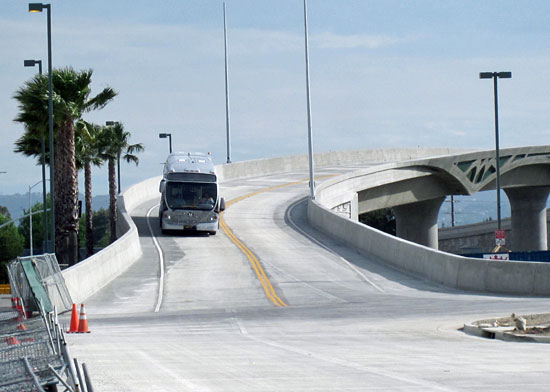
Test runs on the Orange Line Extension are already underway, and so is a new safety campaign. Photo/Metro
Posted 5/23/12
Don’t just vote—work at the polls
May 31, 2012
Venice is desperately seeking poll workers. So is Westwood. Ditto for Beverly Hills, Calabasas, Mar Vista and a host of other communities.
With the California primaries less than two weeks away, Los Angeles County Registrar-Recorder/County Clerk Dean Logan has put out a call for democratically-minded citizens to man the ballot boxes during the June 5 elections. Some 36 cities in Los Angeles County are short of volunteers, including Los Angeles, where precincts in more than 50 ZIP codes have reported shortages of two or more poll workers. (Click here and scroll down for a complete list of precincts that need workers.)
Many of the shortages are in high turnout areas of the Westside, though recruiting calls have gone out from Altadena to Westlake Village. Bilingual help is especially needed.
“Without poll workers, elections cannot function,” Logan says, noting that community volunteers “are essential to fair and open elections.”
Up to 25,000 poll workers are recruited to work in their respective election precincts each time the county holds a major election. Any registered voter who is over 18 and a resident of Los Angeles County can volunteer.
Workers are on duty from 6 a.m. to 9 p.m., setting up and closing the polls and assisting voters. They receive a stipend of up to $105.
Interested volunteers should apply by June 4. Additional information is available here and here. To apply, visit www.lavote.net or call 1-800-815-2666 (Option 7). Online application forms are also available here.
Posted 5/24/12
A stroll through L.A.’s oasis
May 30, 2012
What do tree frogs, bobcats and woodpeckers know that you don’t? They all love to hang out at spring-fed Fern Dell in Griffith Park. And this Saturday, June 2, Friends of Griffith Park, a non-profit restoration group, wants to let you in on the secrets of this verdant oasis with a free, guided tour.
Fern Dell and its year-round waters have attracted visitors since pre-European Gabrielino-Tongva peoples held tribal meetings there. In the early 20th century, the ravine was transformed into a popular recreational area, complete with ferns, picnic areas, footbridges and terraces.
Unfortunately, the area fell into disrepair over the decades. Invasive plants, graffiti and fern thieves have removed some of the luster from what was once an urban gem. Friends of Griffith Park is in the process of trying to restore the sanctuary, as recently documented by KCRW and the Los Angeles Times. According to group organizer Gerry Hans, the first step in that restoration will be completed when consultants report back with an official assessment of the park. Then, a specific rehabilitation plan will be developed.
Even in its current state, Fern Dell functions as a hotspot for wildlife, while also providing a quiet place for park-goers to explore nature.
The two-hour tour begins at 9 a.m. with coffee and pastries. Volunteers will share facts about the history of Fern Dell and talk about plans to restore it. The expedition meets behind Fern Dell’s Trails Café. To join, RSVP with the number in your party to [email protected]. Parking is available on the street or in the Western Canyon upper lots.
Posted 5/30/12
This summer’s “grand” opening
May 29, 2012
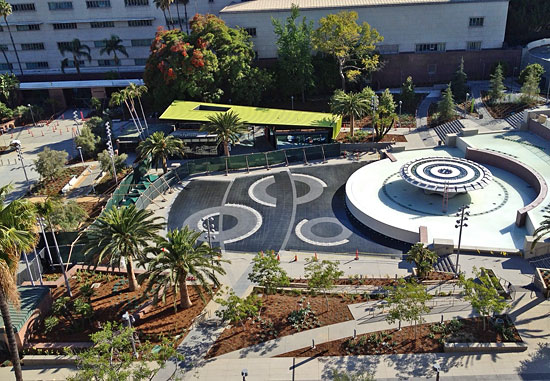
This section of Grand Park, featuring the Arthur J. Will fountain and green-roofed Starbucks, will open first.
The newly named Grand Park in downtown Los Angeles edged closer to reality this week, with the selection of the Music Center as operator of the 12-acre site, now scheduled to begin opening in late July or early August.
The park, which until this week had been called Civic Center Park, promises to dramatically reshape a downtown experience that, for decades, has offered little in the way of outdoor recreation or entertainment. When completed, Grand Park will stretch four blocks—from the Music Center to City Hall—and will feature, among other things, an event lawn, gardens, walking paths and spectacularly renovated fountain (see video here).
Project Manager Dawn McDivitt of the county’s Chief Executive Office said the park’s opening will be phased in throughout the summer. The park’s northern end, which includes the Arthur J. Will Memorial Fountain below Grand Avenue, should be opened in roughly two months. McDivitt said the strategy of staggered openings will give the event lawn at the park’s southern end time to take root—and for the county to create excitement around the unveiling of each successive stage.
With the first opening only weeks away, the Board of Supervisors on Tuesday voted unanimously to contract with the Performing Arts Center of Los Angeles—more commonly known as the Music Center—to oversee park operations for the first three years. That includes lining up a diverse slate of musical, theatrical and educational programming.
“We look forward to working with the county to create a vibrant and welcoming park in the center of downtown,” Music Center Chief Executive Officer Stephen D. Rountree said after the board’s vote. He said that no firm programming decisions have been made but that he expects year-round activities ranging from music festivals to farmer’s markets.
The supervisors also voted to change the name to Grand Park. Planners were worried that the phrase “civic center” was not sending a clear message. “We didn’t want it to sound too governmental or too institutional,” McDivitt said. “We wanted the name to reflect the park’s aspirations.”
The park is part of the larger Grand Avenue project, a massive commercial and residential development that has stalled with the faltering economy. The developer was required to provide $54 million upfront toward the park, thus ensuring its completion.
Posted 5/26/12
Orange Line, golden age
May 29, 2012
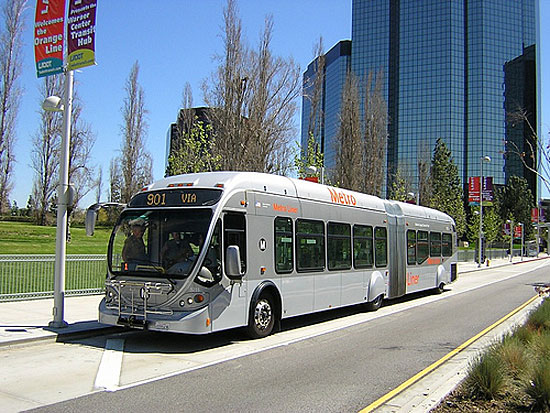
Starting June 30, the Orange Line Extension rolls northward as part of the county's public transit boom.
Sometimes it’s hard to spot a great leap forward when you’re sitting in bumper-to-bumper traffic.
But that’s what we’re living through these days in L.A. County.
Our public transportation system, a national laughingstock just a generation ago, is on a roll. I don’t think it’s an overstatement to say we’ve entered a golden age of public mass transit. I’m not arguing that our notorious traffic congestion is likely to disappear anytime soon; as long as our population keeps growing and 16-year-olds continue to head down to the DMV to get their first driver’s licenses, that’s going to be a fact of L.A. life. But we’re finally in a position to offer the traveling public some meaningful alternatives to sitting and stewing on our freeways and surface streets.
The Orange Line Extension is the latest case in point. This rapid transit bus line opens to the public on Saturday, June 30, with free rides and festivities. Its four-mile route, which runs from Warner Center to the Metrolink train station in Chatsworth, is a northward extension of the original Orange Line, which opened in 2005 to rave reviews and significantly higher-than-projected ridership. (It now stands at more than 25,000 boardings a day.)
The Orange Line Extension—which is coming in under budget and ahead of schedule—promises to continue that success story, offering thousands of new riders not just a better commute but a better quality of life.
As important as this project is to bringing transportation alternatives to our traffic-jammed region, it’s only a small part of what’s now happening across Los Angeles County. Look in just about any direction, and you’ll see signs of a transit revolution.
The long-held dream of building a Westside Subway moved into high gear last week as Metro’s Board of Directors voted to approve the project’s route, placing it on track to break ground as early as 2013.
Meanwhile, the Westside’s first light rail since the Red Car is now open for business. The Expo Line started carrying passengers between downtown and La Cienega in April, and will be reaching Culver City later this summer. Work also has begun on Expo’s second phase, which will extend the line all the way to Santa Monica.
On the other side of the county, the eastward expansion of the Gold Line is underway, with a dramatic bridge taking form across the 210 Freeway as the light rail rolls ahead toward Azusa. And projects ranging from the Crenshaw/LAX Line to the Regional Connector are moving closer to becoming a reality.
These projects—many of them made possible by county voters’ overwhelming approval of Measure R in 2008—are about so much more than moving us from Point A to Point B. Every time we build a mass transit alternative, we return precious time to the daily lives of real people. We restore choice to commuters who have been held hostage to the freeways. And we move our region toward a healthier, less car-dependent future.
I encourage you to hop onboard the Orange Line Extension when it opens June 30. And be sure to take a photo. You can say you were there as L.A. was making its move from public transportation punch line to public transportation powerhouse.
Posted 5/29/12
A Memorial Day to remember
May 25, 2012
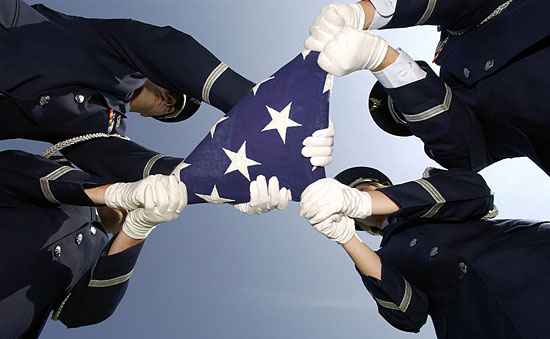
Another summer is upon us, as marked by our upcoming three-day weekend. No doubt, there’ll be lots of department store sales and plenty of backyard barbecues. But too often lost in the Memorial Day festivities is the holiday’s more somber meaning—a day of remembrance for those who’ve died in the nation’s service.
For so many families among us, the wounds of loss are fresh and deep. During the past decade, more than 6,400 men and women have died in Iraq and Afghanistan. My prayers go out to their heartbroken loved ones. The trauma, of course, does not stop there. At this moment, thousands upon thousands of others are struggling mightily to overcome debilitating trauma to their bodies and minds.
I hope you can find a few minutes to commemorate Memorial Day. To help you, the county’s Department of Military and Veterans Affairs has compiled its annual comprehensive list of events, including many that offer special discounts to members of the military and their families. Maybe one way to recognize those who’ve perished in our recent wars is simply to explore the Washington Post’s excellent Faces of the Fallen. Among my plans for the day, I’ll be at the Canoga Park Memorial Day Parade.
My fondest hope is that those individuals now bravely serving in danger zones across the planet will return to us safely so that next year we can celebrate, rather than mourn, them.
Posted 5/25/12




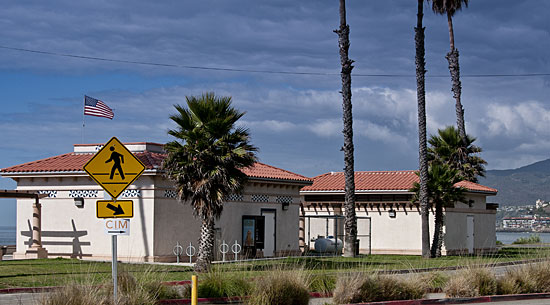

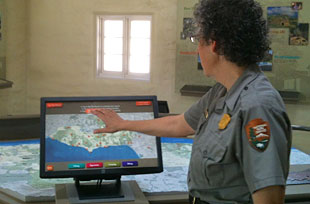
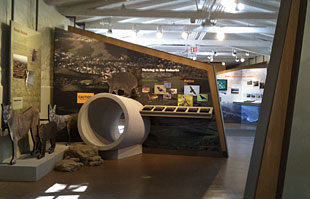
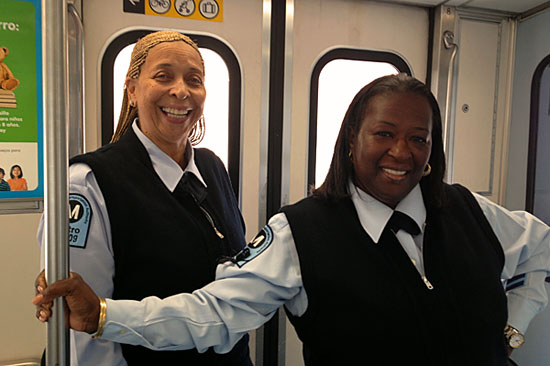
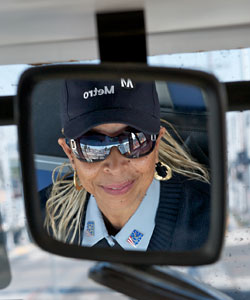
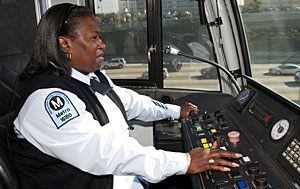







 Check for the latest closure information
Check for the latest closure information








